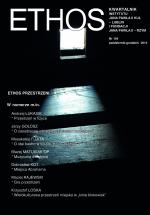 zobacz powiększenie | DOI 10.12887/26-2013-4-104-11 Maciej RAJEWSKI – A Play of Spaces: On the Structure and Dynamics of a Preindustrial Islamic City Cena brutto: 7,00 PLN |
|
The objective of the present article is to provide a physical description of a typical preindustrial Islamic city within the framework of ‘ideal city type’ proposed by Gideon Sjoberg in his seminal work The Preindustrial City: Past and Present. The reconstruction of a model city thus undertaken is primarily based on works of scholars such as Gustave E. von Grunebaum, Janet L. Abu-Lughod, Aidan Southall, Albert H. Hourani, and Richard G. Fox. In the opening part of the paper the structure of a typical Islamic city is described with a focus on the citadel, or government district, the Friday Mosque and the market (suq) adjacent to it, as well as the residential districts with their winding streets. Then, the problem of the influence of the government of the city on its life, growth and development is discussed on the example of the Mamluk rule in Egypt and in the cities of the Near East. Finally, the problem of measuring the flow of time in a preindustrial Islamic city is considered as an important aspect of the dynamics of urban life. Despite the fact that mechanical clocks were a well-known invention they were not used in Islamic cities of that period. Rather, the flow of time was measured by means of the muezzin’s calls to prayer, which might point to the fact that the economies of those cities were less dynamic than those of their European counterparts. Keywords: ideal city type, preindustrial city, urban anthropology, urban dynamics, Islamic architecture Contact: Pliki do pobrania: » Gra.przestrzeni...streszczenie.pdf | |
